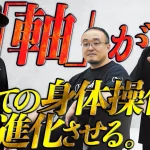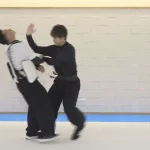Text by Grigoris A.Miliaresis
(Re)discovering a pioneer
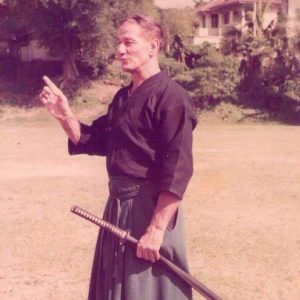
Donn F. Draeger, 1922-1982 (courtesy of Jimmy Koo)
The first discussion I had with “Hiden” about legendary American martial artist, martial arts’ teacher, pioneer researcher of combative behavior, writer and propagator of Japanese martial traditions Donn Draeger was in 2013; if I’m not mistaken, it was during an editorial meeting at the magazine’s office when I dropped the name and, as often happens in Japan, the response was one of interest and curiosity:despite his enormous influence outside Japan and especially to the subset of martial artists interested in koryu/classic traditions, very few Japanese have even heard the name and among those who have, even fewer really know the extent of his involvement and his work towards a better understanding of man’s fighting behavior.
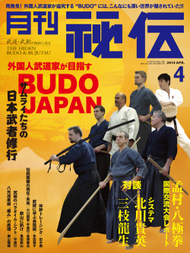 Therefore, it isn’t surprising that it took us a year to plan an article which, appropriately enough, was part of a “non-Japanese practicing martial arts in Japan” feature; the feature was the cover story of the April 2014 issue and the article was on page 34 and was titled “The Pioneer” (the English word written in English and in Japanese). If you can’t find the issue, the article is also here in Budojapan.com at https://budojapan.com/feature-articles/donn-f-draeger-the-pioneer/ In the three pages I had, I tried to contain as much information as possible about this spectacular man and I’m sure I failed miserably.
Therefore, it isn’t surprising that it took us a year to plan an article which, appropriately enough, was part of a “non-Japanese practicing martial arts in Japan” feature; the feature was the cover story of the April 2014 issue and the article was on page 34 and was titled “The Pioneer” (the English word written in English and in Japanese). If you can’t find the issue, the article is also here in Budojapan.com at https://budojapan.com/feature-articles/donn-f-draeger-the-pioneer/ In the three pages I had, I tried to contain as much information as possible about this spectacular man and I’m sure I failed miserably.
Thankfully, better (and more imaginative) men than me, felt that “more” can take other forms. Four of the most recognizable names in the expatriate martial arts (and particularly classic martial arts) community, Mssrs Alex Bennet, Antony Cundy, Daniel Lee and Bradford Pomeroy with the ollaboration of professor Susumu Nagao from the Japanese Academy of Budo (Budo Gakkai) set up a twofold event on March 23 and March 24. The former was for Japanese martial arts researchers and in Japanese and the latter for a more open, international audience and in English -also, it was longer lasting well over four hours.
The Life & Legacy of Donn F. Draeger event
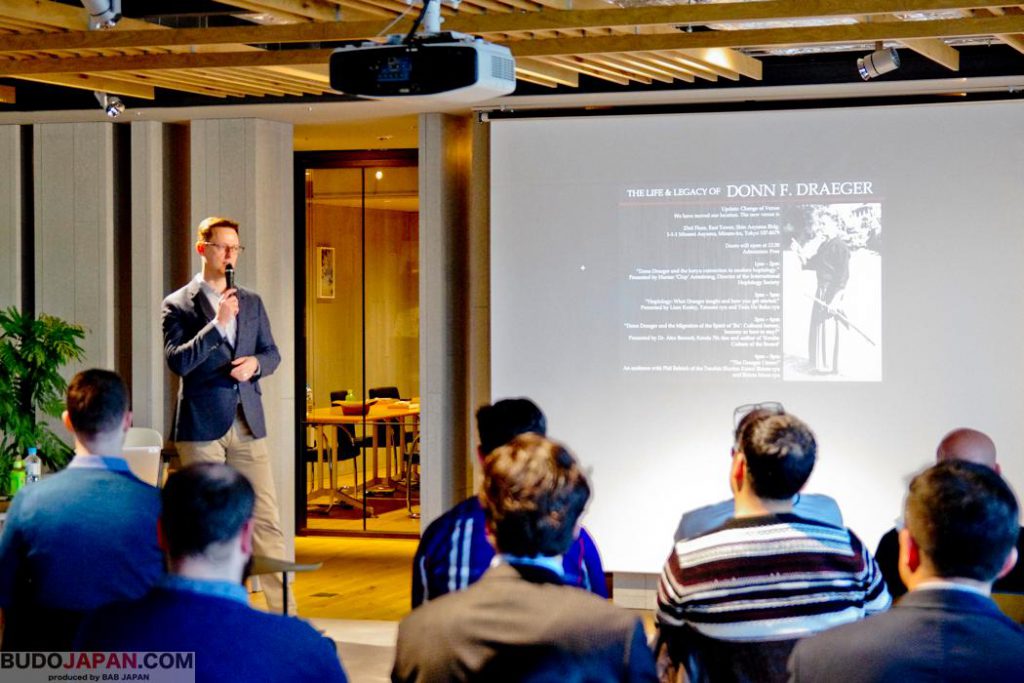
Tony Cundy opening the event
What was the event? A series of four hourly lectures about Donn Draeger and his work on the martial arts, delivered by some of the most well-versed people on the subject: Hunter “Chip” Armstrong, Draeger’s disciple and Director of the International Hoplology Society, the organization continuing his research on combative behavior, Liam Keeley, another of Draeger’s disciples anthropologist and holder of Okuden Mokuroku in Tatsumi-ryu and Shihan Menjo in Toda-ha Buko-ryu, Alex Bennet, kendo kyoshi 7th dan, Iaido, naginata, tankendo and jukendo 5th dan, Jikishin Kage-ryu 3rd dan and author and translator of many martial arts books and Phil Relnick, holder of Okuden Mokuroku in Tenshinsho-den Katori Shinto-ryu and Menkyo-Kaiden in Shinto Muso-ryu and one of Draeger’s closest friends.
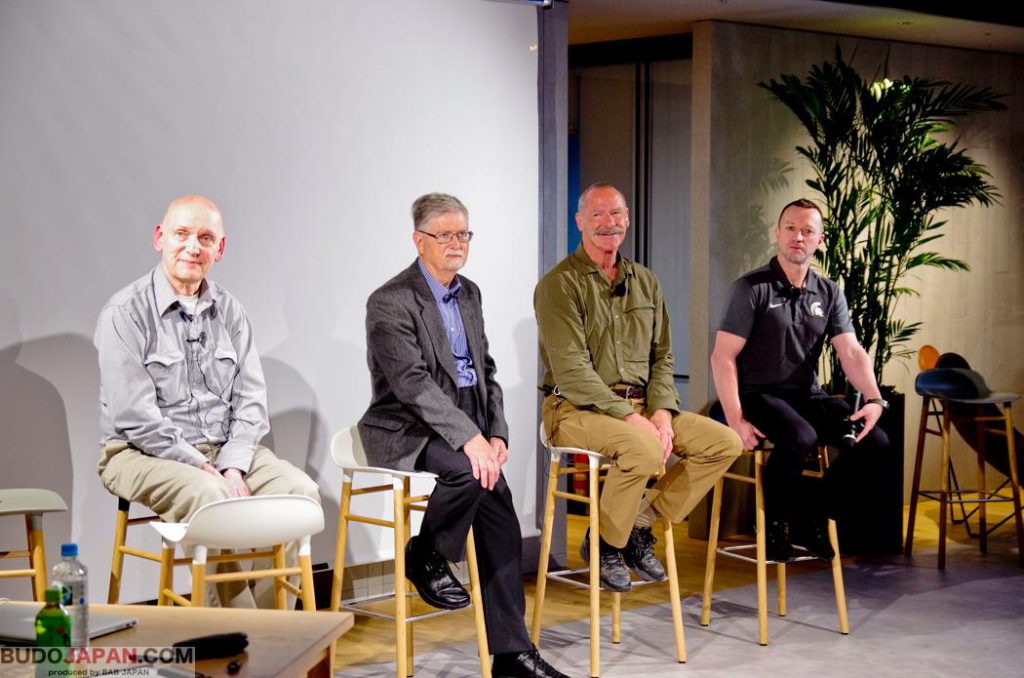
(From left) Phil Relnick, Liam Keeley, Hunter “Chip” Armstrong, Alex Bennet
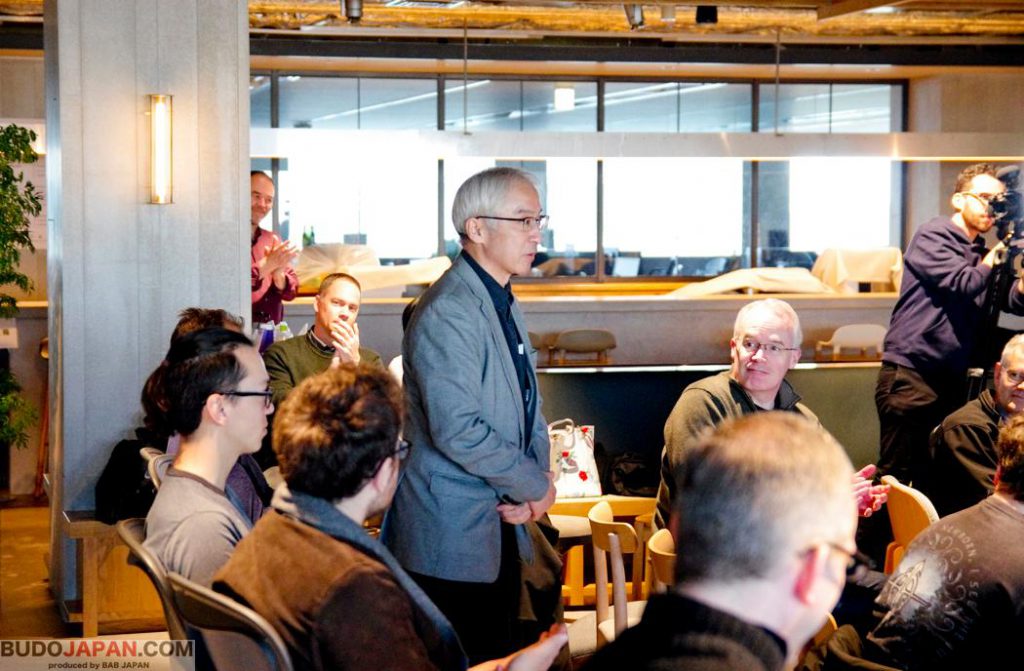
Susumu Nagao
Listening to Tony Cundy speak about the event it seems it happened almost naturally: having read Draeger’s books, professor Nagao started thinking about his classification of the martial arts -classical bujutsu, classical budo, modern budo- and thought to invite some of the non-Japanese practitioners of martial arts to give one presentation about his legacy to the Budo Academy. Their response was that if such an event was to be made it should involve people who had actually studied and practiced with Draeger and had a personal relationship with him. Some of those people were found, were brought to Japan from the US and Australia and the two events were set up.
Although in the age of social media, gathering a crowd is much easier than it used to be, the turnout at the English-language event (over 70 people) was beyond the expectations of the organizers; what was even more impressive was the fact that there were people who came to Japan just to attend the event! And even more impressive, and certainly an indication of its importance on a global scale, is that the videos of the talks (created with the collaboration of Seido and Guillaume Erard and posted on YouTube) have gathered collectively over 30,000 views -remember we are not talking here about pop music videos but about lectures about a particular person on a very specific field of academic study.
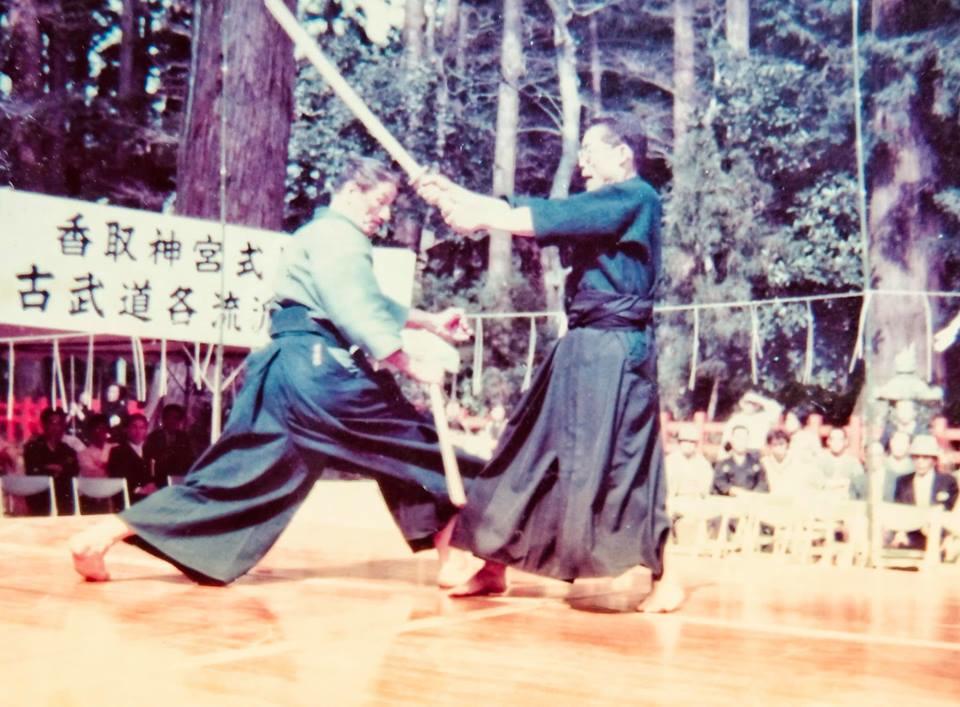
Draeger demonstrating Uchida-ryu tanjojutsu at the Katori Jingu Jinkosai with Yoneno Kotaro in 1978 (Courtesy of David A. Hall)
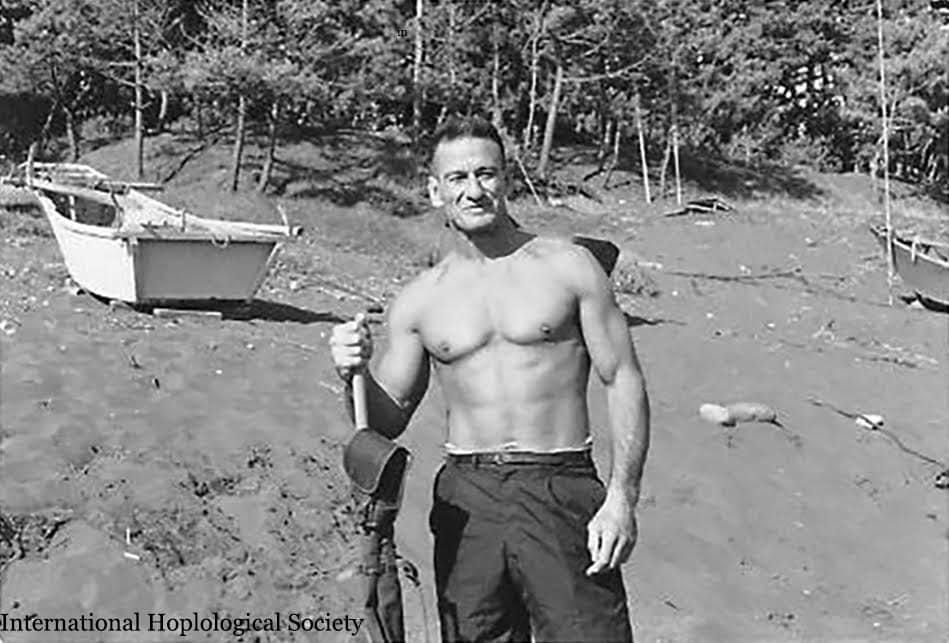
Draeger about to start training at Ninomiya Beach in 1965 (Courtesy of International Hoplology Society)
Is it really a field of academic study? Draeger thought so and dedicated his life to establish its basis; most people know him from his work in Japan and his involvement with its martial traditions but between 1956, when he moved here and 1982, when he died, he traveled extensively around Southeast Asia and had the opportunity to document tens of regional arts from China, Indonesia, Malaysia and elsewhere. This material supplemented his core information that came from his involvement with judo, Tenshinso-den Katori Shinto-ryu and Shinto Muso-ryu and became the foundation of the work still carried on by the International Hoplology Society (IHS).
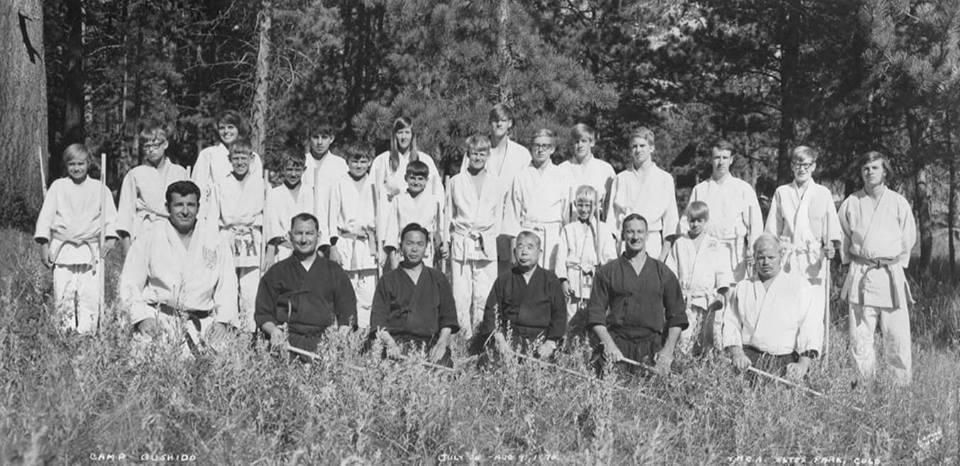
Camp Bushido, Estes Park, Colorado, 1970. Front row, l-r: Ben Campbell, unknown, Kaminoda Tsunemori, Shimizu Takaji, Donn Draeger, unknown. (Courtesy of Blane Bellerud)

(Courtesy of International Hoplology Society)
Chip Armstrong: “Donn Draeger and the koryu connection to modern hoplology”
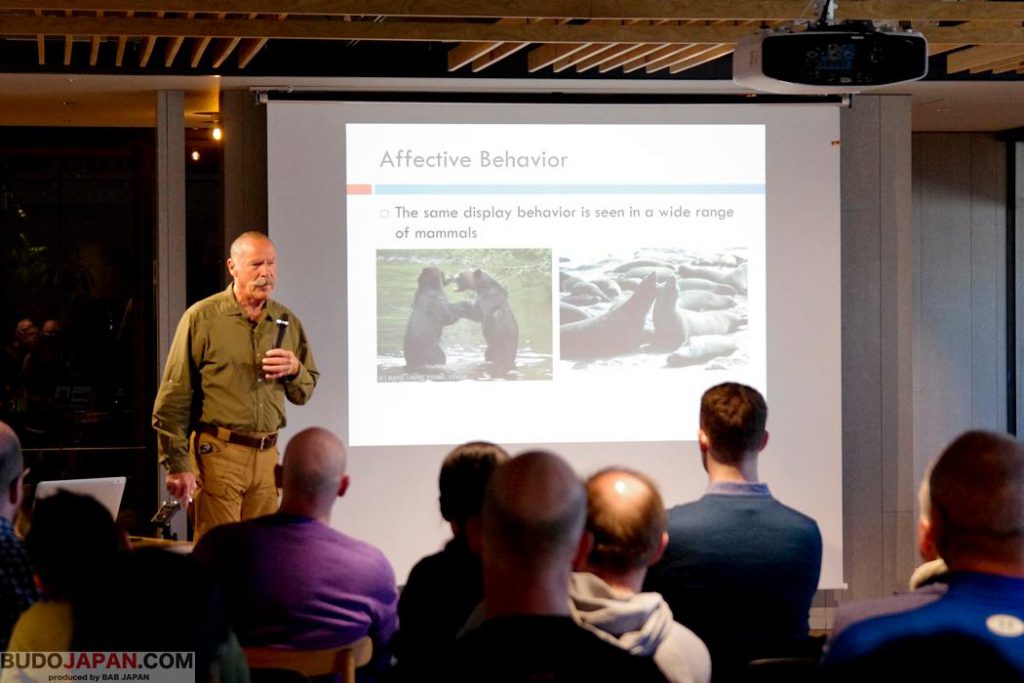
Chip Armstrong’s presentation
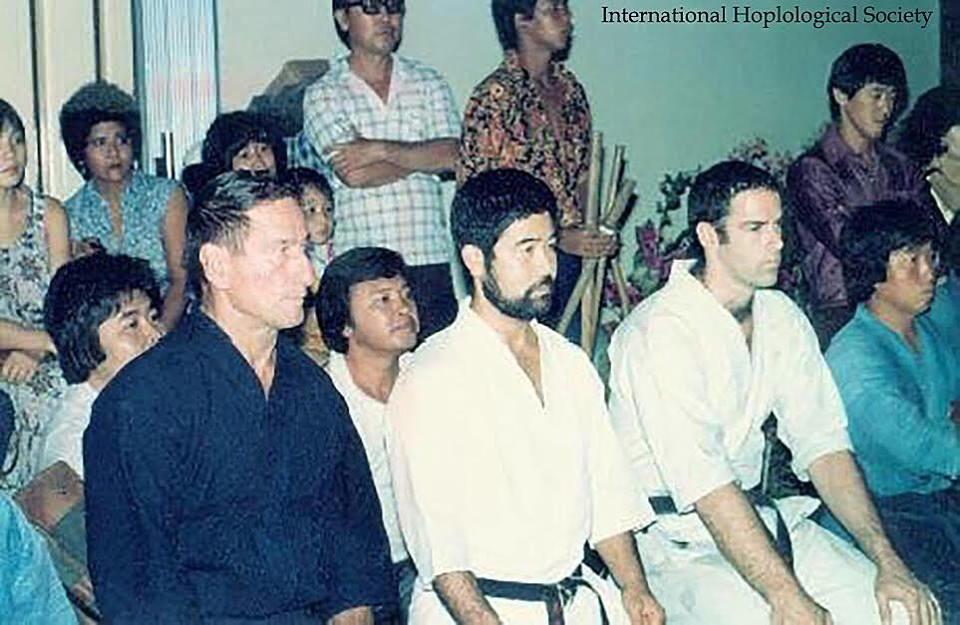
Donn Draeger, Higaonna Morio and Chip Armstrong in Penang, Malaysia, 1979 (Courtesy of International Hoplology Society
So it was only natural that the first speaker in the event would be Hunter “Chip” Armstrong, present Director of the IHS and himself a longtime practitioner of Goju-ryu karate, Tatsumi-ryu heiho and Shinkage-ryu heiho/Owarikan-ryu sojutsu. The subject was “Donn Draeger and the koryu connection to modern hoplology” and in less than one hour, Mr. Armstrong managed to cram in an introduction to Draeger’s life and study of martial arts, an introduction to hoplology (“The study of the development and evolution of human combative behavior and performance”), an explanation about how Draeger used what he observed in the former to create the latter and how hoplology continues today after his passing.
Using examples from many fighting cultures -from the Yakutian horse warriors of Siberia to the Indian Silambam, the Nubian wrestling, Okinawa’s karate and more, Mr. Armstrong made very clear Draeger’s descriptions of “martial combative systems”, “civil combative systems” and how they related to the Japanese concepts of “bujutsu” and “budo” respectively. This is particularly interesting especially when “civil combative systems” are broken down to their purposes i.e. civilian self defense, dueling, sports and competition and psycho-spiritual development: these are all concepts that come up very often in martial arts-related discussions and Draeger’s classifications can really help take these discussions to a much more serious level.

US Marine’s training
Perhaps the most interesting part of Mr. Armstrong’s presentation was that taking Draeger’s ideas one step further and exploring aggressive behavior and how it is expressed in all animals (including man) either against members of the species/group or against outsiders, the IHS has developed a deeper understanding of physical and psychological elements common in fighting systems from all over the world and used this understanding to create training programs for the US Marine Corps and for law enforcement agencies. And it’s amazing how teachings from a spear fighting system that sprang from the battlefields of Japan’s Sengoku period can be relevant to a group Marines fighting in Afghanistan in the 21st century!
Liam Keeley: “Hoplology: What Donn Draeger taught and how you get started”
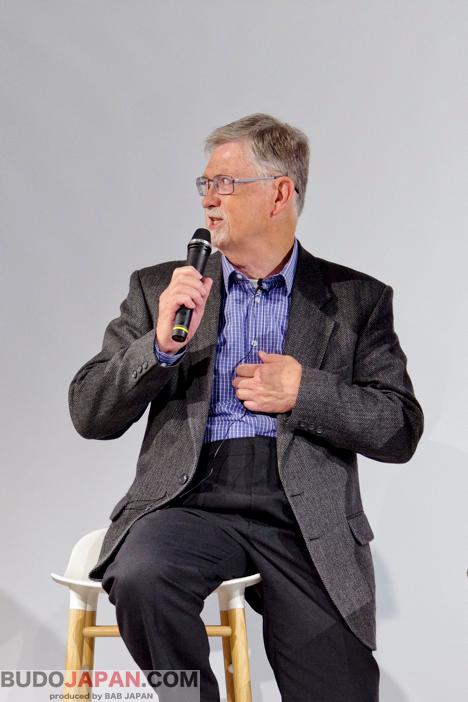
Liam Keeley’s presentation
The next lecture came from Liam Keeley, another longtime practitioner of Japanese martial arts: he is one of the very few non-Japanese who are licensed instructors in not one but two classic traditions, Toda-ha Buko-ryu and Tatsumi-ryu and has been teaching them for many years in Australia where he presently lives. And, like “Chip” Armstrong, he spent several years in the 1970s practicing Goju-ryu karate, while at the same time being near Draeger and accompanying him in some of this field expeditions in Southeast Asia and is also a member of IHS, helping to promote and expand Draeger’s work. His presentation was titled “Hoplology: What Donn Draeger taught and how you get started”.
Even though some parts of Mr. Keeley’s lecture overlapped with some of those in Mr. Armstrong’s his insights are unique: unlike other members of Draeger’s group, his depository of knowledge contains information from a Chinese system, Chen Style Tai Chi as well as from a South African one, the Mhlabatini style of Zulu stick fighting –being born in South Africa and having studied anthropology there, he had the opportunity to get exposed to this very different aspect of fighting and this mix of Okinawan-Japanese-Chinese-South African influences as well as a degree in anthropology give him a point of view that very few have.
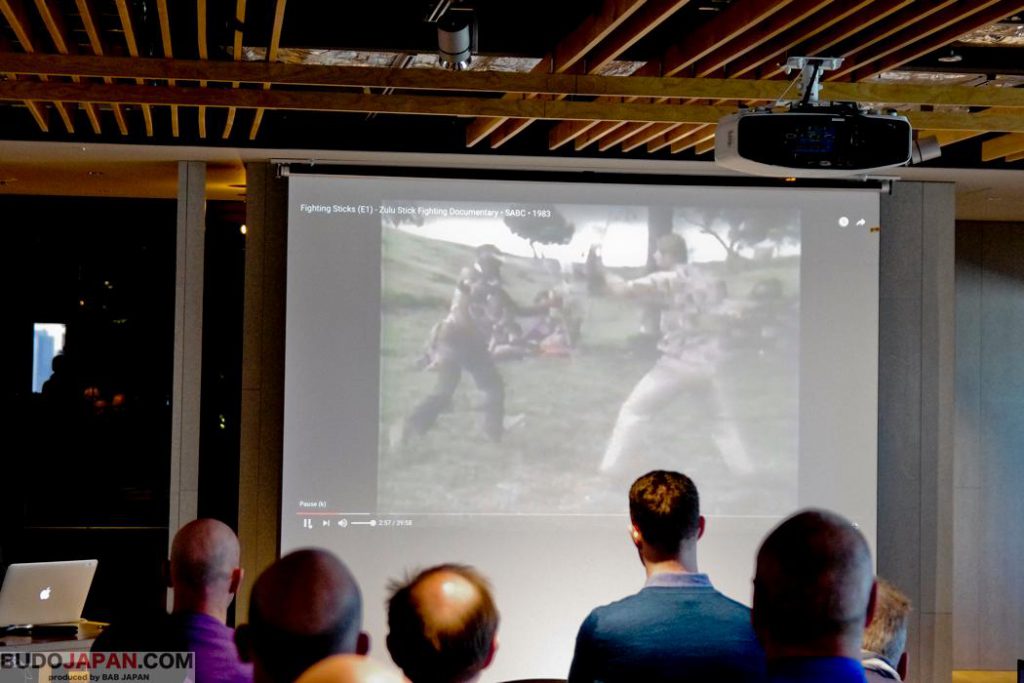
Mhlabatini style of Zulu stick fighting
For me, other than some great resources that come from his academic background, the highlight of Mr. Keeley’s lecture was in the “how do I become a Hoplologist” part. There he offers some excellent suggestions about what someone interested in carrying on Draeger’s work should have as qualifications: at least a Bachelor’s degree, personal involvement with combative study and particularly practice in a weapons’ art, access to IHS’s archives and a good understanding of the various forms of aggression. And some proposed fields of study like India, the horse cultures of Central Asia, and the cattle cultures of East Africa.
Alex Bennet: “Donn Draeger and Migration of the Spirit of Bu”

Alex Bennet’s presentation
The next speaker was Dr. Alex Bennett and introducing him is always a problem because even the briefest version of his CV has a word count that runs into the hundreds. Both as an academic and as a martial artist, but most importantly as a combination of the two, Dr. Bennet has managed to become a household name between both Japanese and non-Japanese who live and practice in Japan particularly the arts of the sword. It’s a common saying in these circles that if there’s ever going to be one non-Japanese who will become a kendo 8th dan hanshi it will be him and even a superficial reading of his “Kendo: Culture of the Sword” (University of California Press, 2015) is enough to understand why.
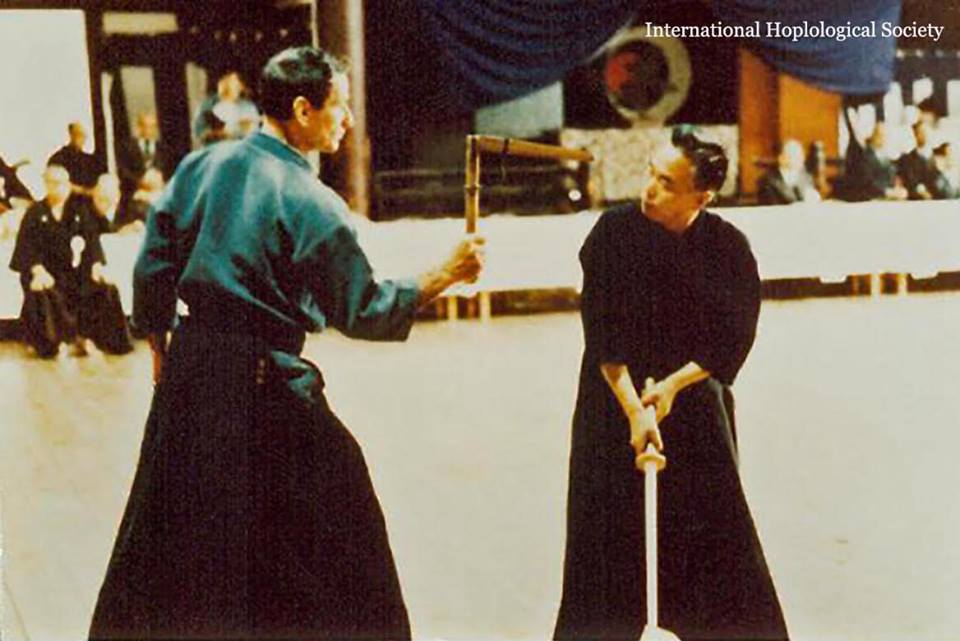
Draeger demonstrating Isshin-ryu kusarigama-jutsu with Shindo Muso-ryu menkyo kaiden holder, Kaminoda Tsunemori. (Courtesy of International Hoplology Society)
Dr. Bennett’s lecture was titled “Donn Draeger and Migration of the Spirit of Bu: Cultural Heresy, Hearsay, or Here to Stay” and in it, he moved in a very different but equally fascinating area: how Draeger’s basic differentiation between “budo” and “bujutsu” is understood and expressed in Japan and how this understanding evolved with time and especially after the enormous changes that came with the Meiji Restoration; in a way this lecture links directly to professor Nagao and his wish to explore more those definitions and their interpretation by Japanese martial artists and it’s quite fitting that this link was provided by a fellow academic.
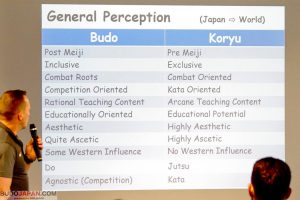
“Budo and Koryu”General Perception
Dr. Bennett’s lecture was really packed with insights but if I were pressed to pick one, it would be this: despite the fascinating way these differences have been perceived and expressed in Japan and the world, using Draeger’s work as a springboard we can move towards a broader understanding of Japan’s fighting culture and this can benefit us as practitioners and Japan as the vessel of this culture. In his own words, what we need is more meaningful international interaction, more contextual understanding and more interaction between budo and koryu –as a practitioner of four modern arts and four classic he’s certainly speaking from experience!
Phil Relnick: “The Draeger I knew”
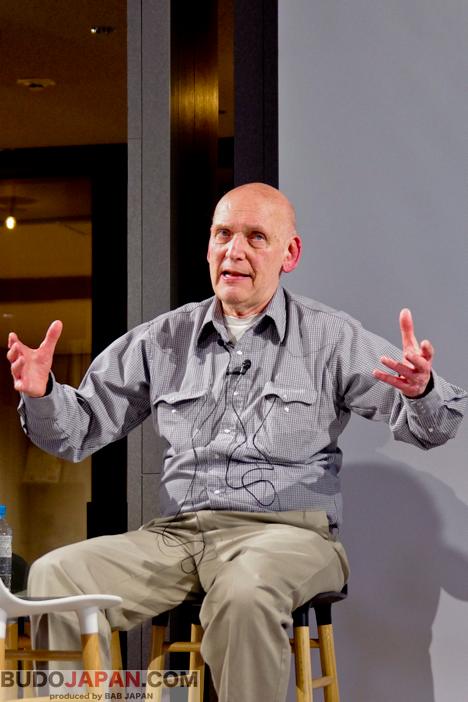
Phil Relnick’s talk
The last lecture was perhaps the most heartfelt and moving: Phil Relnick, the most senior among the four panelists and probably the most senior non-Japanese koryu teacher in the world spoke for over one hour about “The Draeger he knew”. The Draeger who was a natural athlete, a fierce practitioner of judo, Tenshinsho-den Katori Shinto-ryu and Shinto Muso-ryu and a fervent student of not only fighting cultures but also history and culture and several other subjects but who was also a friend, a comrade, a teacher, a mentor, a confidant, a companion and a fellow traveler for decades. Drawing from these decades, Mr. Relnick drew a picture of Draeger that became alive in front of our eyes.
When dealing with people who are bigger than life -and Donn Draeger certainly was one- we never see or even if we do we tend to overlook their human aspects. They live their lives with a feverish passion that becomes a magnifying glass and it is through this glass that we see them and try to understand them. Mr. Relnick, himself one of the formidable few who have mastered two classical arts, the same as his good friend, shattered this glass and showed us a Draeger that literally only he knew. And this, instead of making him smaller, made him more real and his achievements more remarkable –if such a thing was possible.

Kodokan Kagamibiraki, 1963. (Courtesy of Blane Bellerud)

In 1966, Draeger was involved as fight coordinator and stand-in in the James Bond film, “You Only Live Twice” starring Sean Connery. Pictured is Sean Connery (l) receiving a honorary rank certificate from renowned karate instructor, Mas Oyama (r), with Draeger looking on.
An afternoon to remember
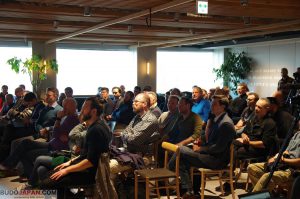
“The Life & Legacy of Donn F. Draeger” event’s audience
I commented later to a friend who couldn’t be there that this was probably the most enjoyable budo-related experience I had that didn’t involve actual practice. I stand behind this statement not only because it made me wiser in a subject that has been one of my standing interests for over 30 years but because with their initiative, planning and flawless execution, Alex Bennet, Antony Cundy, Daniel Lee and Bradford Pomeroy created right there, in a cozy space of a Tokyo high-rise, a community that was brought together and sat around to hear some of its members tell stories about another member. I have been to all kinds of lectures and this was nothing like any of them.

Donn Draeger’s “Wall of Weapons” in his appartment in Narita, July 1979 (Courtesy of Michael Belzer)
I didn’t meet Donn Draeger: when I discovered his “Martial Arts And Ways Of Japan” trilogy (“Classical Bujutsu”, “Classical Budo” and “Modern Bujutsu & Budo”) he had already been dead for five years and in the 20 years that passed between then and the time I came to Japan, very little of him had survived. But what I felt that afternoon, during and after “The Life & Legacy of Donn F. Draeger” event was that the essence had: it is our common passion for these arts and especially the classic martial arts which we took up because of him, directly or indirectly. I will owe a great debt to the organizers of this event for evoking this feeling in, I believe, all those present –camaraderie is, after all one of the elements that make this relentless practice so rewarding.
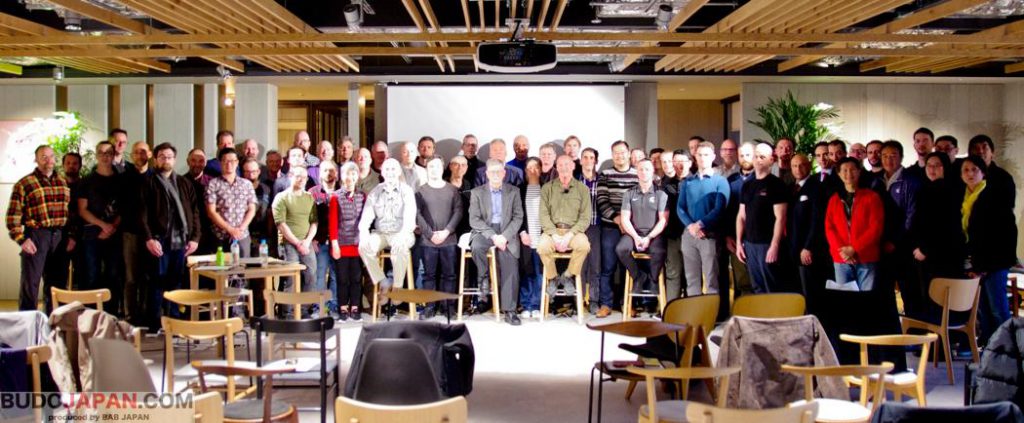
PS
Besides the event itself, I would like to thank the organizers for one more reason: their help in the production of this article. Especially Tony Cundy and Bradford Pomeroy went out of their way to make sure that we had all the material available for it in time and responded immediately to all our requests. As the saying goes, this wouldn’t had been possible without you, gentlemen so thank you very much!
Related article:Donn F. Draeger: The Pioneer
 About the author
About the author
Grigoris Miliaresis has been practicing Japanese martial arts since 1986. He has dan grades in judo, aikido and iaido and has translated in Greek over 30 martial arts’ books including Jigoro Kano’s “Kodokan Judo”, Yagyu Munenori’s “The Life-Giving Sword”, Miyamoto Musashi’s “Book of Five Rings”, Takuan Shoho’s “The Unfettered Mind” and Donn Draeger’s “Martial Arts and Ways of Japan” trilogy. Since 2007 his practice has been exclusively in classic schools: Tenshin Buko-ryu Heiho under Ellis Amdur in Greece and Kent Sorensen in Japan and, since 2016, Ono-ha Itto-ryu under 17th headmaster Sasamori Takemi and 18th headmaster Yabuki Yuji.
http://about.me/grigorismiliaresis





